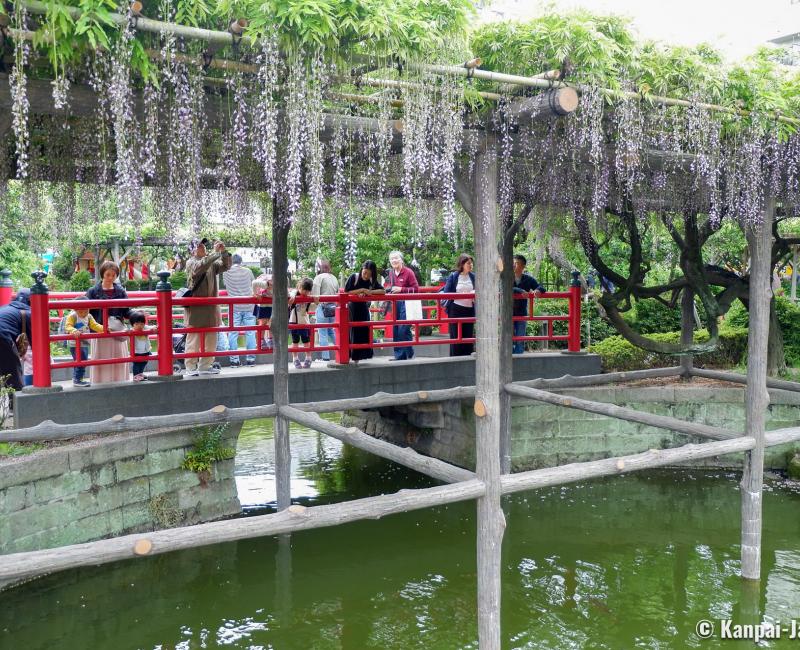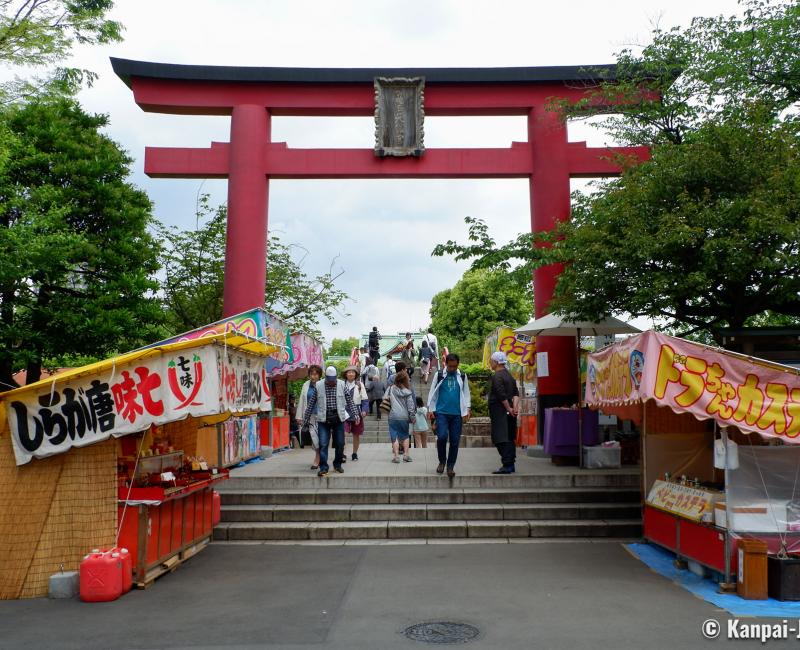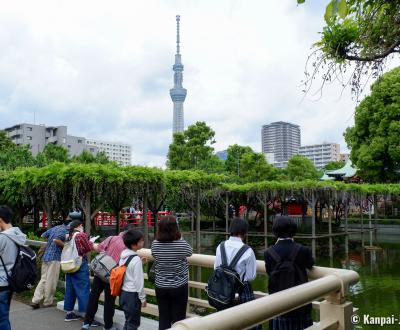Kameido Tenjin
Wisteria on Display in Traditional Downtown Tokyo
Kameido Tenjin is a Shinto shrine located in Koto ward, in the east of Tokyo. Very popular throughout the year, it is dedicated to Sugawara no Michizane. During a couple of weeks in spring, it becomes a must-see visit for the wisteria blooming starting mid-April, following the cherry trees season.
Kameido Tenjin shrine was built in 1661 in Edo (Tokyo’s former name) to honor Sugawara no Michizane (845 – 903), a remarkable Japanese politician and scholar of the Heian period who was granted the eminent title of "head of studies" (daigaku no kami 大学の頭) by the Imperial Court.
Having sided with Emperor Uda in a succession conflict, he was accused of conspiracy by the Fujiwara clan. Demoted to a lower position, Sugawara was exiled in Dazaifu on Kyushu Island, where he quickly died. The years following his death were marked by a succession of disasters: droughts, fires 🔥 and the death of one of Emperor Daigo’s sons, all calamities that were attributed to Michizane’s resentful spirit.
The old genealogy of tenman-gu shrines
A Kitano Tenmangu Shinto shrine was thus built in Kyoto to honor and appease his spirit, and Michizane himself was deified under the name of "Tenjin-sama". It was the first of many other shrines built afterward throughout the country in the name of the scholar, and Tokyo’s Kameido Tenjin belongs to this long line.
The shrine was destroyed by World War II aerial bombings, ant the present days’ building date back to the second half of the 20th century. An impressive red torii ⛩️ gate still marks the entrance of this shrine located in a small peaceful residential neighborhood in Tokyo’s downtown Shitamachi. People come here to pray for children’s health and academic success.
Kameido Tenjin’s grounds were designed following the model of Dazaifu’s Tenmangu shrine in Kyushu Island. Starting from the torii gate, a straight path leads to the main hall, Honden, and crosses three bridges over a pond shaped in the Japanese character 心 (kokoro or shin) meaning "the heart," both spiritual and physical.

Three Japanese bridges to meet the kami
Nature’s pervasiveness associated to architectural elements give a marvelous aspect to the place. The path to the Honden and the succession of bridges symbolize the human life. This itinerary allows visitors to purify their soul before bowing to the kami deity and pray.
The three bridges recall the steps of purification. Two of them are taiko-bashi bridges, or drum bridges:
- The first bridge is a stone drum bridge with vermilion handrails. It is named Otoko-bashi ("men’s bridge") and symbolizes the past,
- The second one is a flat bridge named Hira-bashi ("flat bridge") that symbolizes the present,
- The last one is a taiko-bashi similar to the first. It was named Onna-bashi ("women’s bridge") and symbolizes the future and hope.
The famous ukiyo-e etchings artist Utagawa Hiroshige (1797 - 1858) painted the shrine and Otoko-bashi Bridge in the series of One Hundred Famous Views of Edo that inspired Claude Monet. The top of this bridge still offers a wonderful view on the shrine’s grounds and on the main hall Honden, with the Tokyo SkyTree as a contemporary background.

Spring wisteria celebrated during Fuji Matsuri festival
The highlight of the festival season comes in spring 🌸 during Fuji 🗻 Matsuri, the wisteria festival. Hira-bashi Bridge becomes a popular observation spot on the fabulous scenery of myriads of wisteria flowers blooming from mid-April to early May.
Thoughtfully arranged trellis on the side of the bridge sustain the branches of about fifty trees, providing mauve color and blue hues in the heart of the sacred place. During night openings, the hanging flowers are lit up, and swaying in a gentle breeze, creating a fairylike and ephemeral atmosphere.

A lively shrine all year round
Several festivals enliven the shrine, whose outer alleys are often crowded with stalls typical of this kind of event and mostly serving street food. It is a good occasion to taste savory okonomiyaki crepes, yakisoba stir-fried noodles, or takoyaki octopus balls in a beautiful setting, with some stalls even having a few seats.
The Golden Week in early May is the time of traditional instruments concerts, such as:
- Koto (or Japanese harp),
- Tsugaru Shamisen (a three strings lute),
- Wadaiko (Japanese drum),
- And also traditional Shinto dance Mikomai.
Kameido Tenjin offers surprising discoveries all around the year. Beside Fuji Matsuri, two other important flower festivals are held in February and October, respectively for plum trees (Ume Matsuri) and chrysanthemums (Kiku Matsuri).

